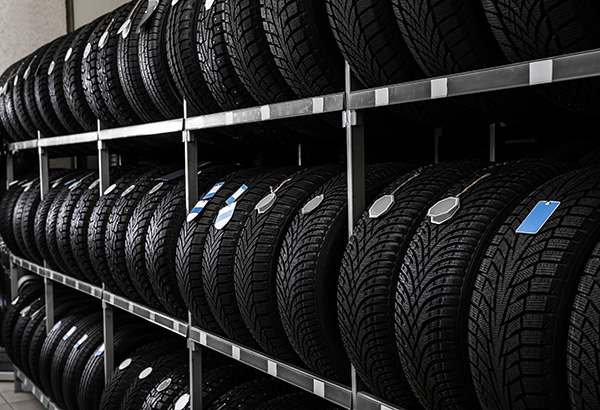
Your tires are the only part of your vehicle that makes direct contact with the road, which makes their condition vital for safety, handling, and overall performance. But many drivers don’t think about tire replacement until something goes visibly wrong—like a flat or a blowout. In reality, tires give off clear warning signs when they’re nearing the end of their life, and recognizing those signs early can prevent accidents and improve your driving experience.
If you’re unsure whether it’s time for a new set of tires, here are the key signs to watch for.
Tread Wear That’s Too Low
One of the most reliable indicators that your tires need replacement is tread depth. Tire tread helps grip the road, especially in wet or slippery conditions. As it wears down, your vehicle’s ability to stop and corner safely is reduced.
The easiest way to check tread depth is the penny test. Insert a penny into the tire’s tread with Lincoln’s head upside down. If you can see the top of his head, your tread is below 2/32 of an inch, and it’s time for replacement. Many tires also have wear bars—raised sections of rubber within the tread. If those are flush with the tread, the tire is worn out.
Cracks, Bulges, or Visible Damage
Even if the tread looks okay, your tires could still be unsafe. Cracks in the sidewall may indicate aging rubber or exposure to sunlight and ozone. Bulges or bubbles suggest internal damage, usually caused by impacts like potholes or curbs. These weak spots can lead to sudden tire failure and should never be ignored.
Visible cords, cuts, or gashes are also serious red flags. If you see any structural damage, it’s best to have the tire inspected immediately—driving on a compromised tire can be extremely risky.
Uneven Tread Wear Patterns
Uneven wear can point to problems beyond the tires themselves, such as poor alignment, suspension issues, or unbalanced wheels. If one tire is wearing faster than the others, or if you notice wear only on the inner or outer edge, it’s time to investigate further.
Rotating your tires regularly helps promote even wear, but once the damage is done, those tires may not be salvageable. Uneven wear not only reduces traction but also leads to a rougher, noisier ride.
Vibration or Noise While Driving
A certain amount of road feel is normal, but if you notice excessive vibration through the steering wheel or unusual road noise, your tires might be to blame. This could be due to tread separation, internal tire damage, or imbalance.
These symptoms may also come from other components like wheel bearings or suspension parts, so a thorough inspection is important. But if the tires are old or visibly worn, replacing them is often the safest solution.
Tire Age
Even if your tires still have tread, they can degrade over time. Most manufacturers recommend replacing tires every six to ten years, regardless of mileage. Rubber hardens and cracks with age, which can lead to reduced grip and a higher risk of blowouts.
You can check the age of your tire by looking for the DOT code on the sidewall. The last four digits indicate the week and year the tire was made (for example, “1820” means the 18th week of 2020). If your tires are more than six years old, it’s time to start thinking about replacement—even if they look fine.
Decreased Performance in Wet Conditions
Tires that are nearing the end of their lifespan tend to struggle in rain or on slick roads. You may notice longer stopping distances, reduced traction, or increased hydroplaning risk. If your vehicle feels less stable than it used to in wet weather, worn-out tires could be the cause.
This decrease in performance is gradual, so many drivers adapt without realizing how much grip they’ve lost. Replacing tires can restore control and improve safety in poor weather.
Dhillon Motorsports – Tire Inspection and Replacement in San Jose, CA
At Dhillon Motorsports in San Jose, we know the importance of having tires you can count on. If you’re noticing signs of wear, vibration, or just aren’t sure when to replace your tires, our team will inspect them thoroughly and recommend the right options for your vehicle.
Whether you’re replacing one tire or upgrading the whole set, we’ll make sure your car is safe, responsive, and ready for the road ahead.